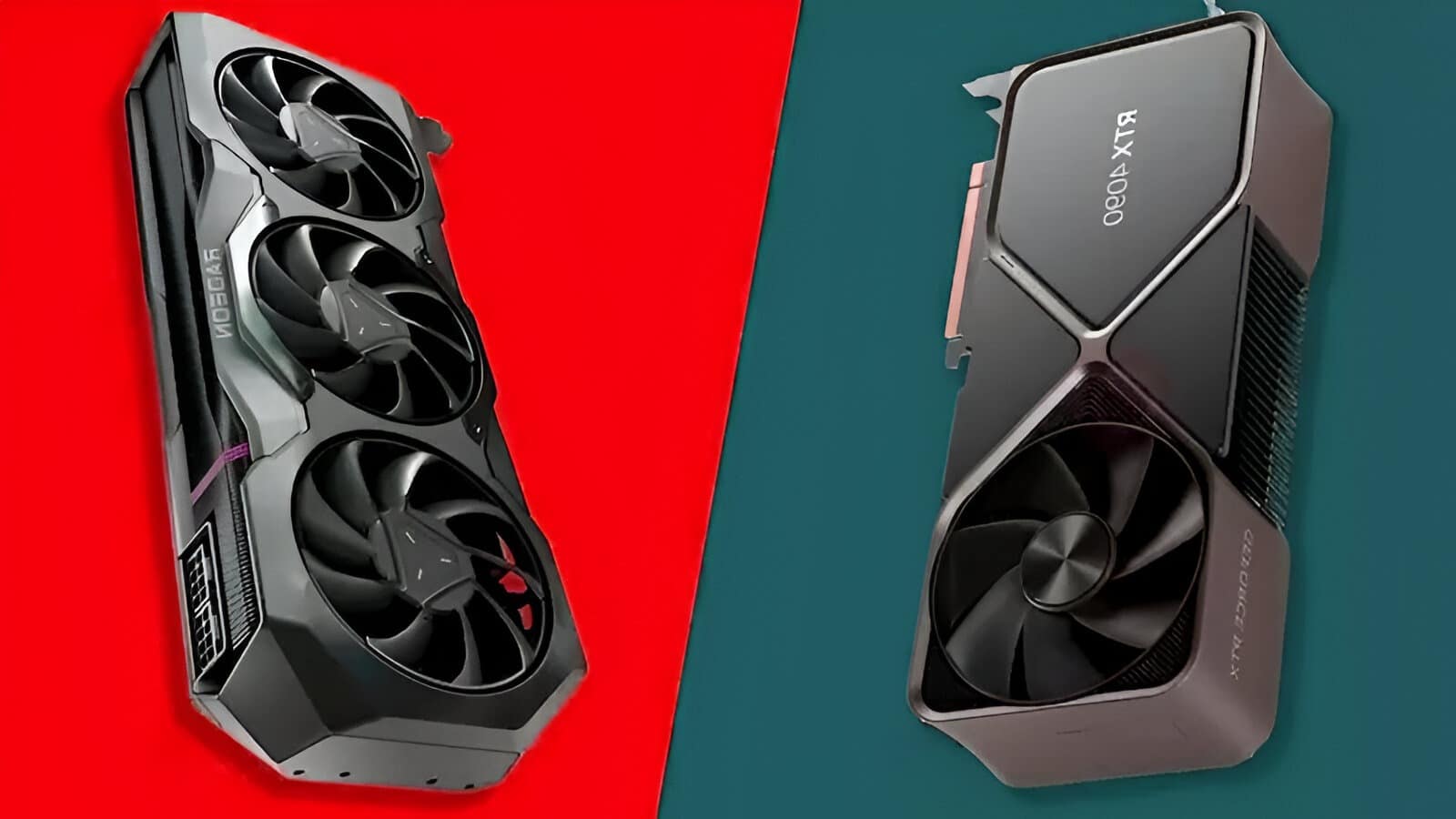
The advancement of graphics memory has been instrumental in driving the performance of modern GPUs. From early SDRAM-based memory to contemporary GDDR6 and GDDR6X standards, each iteration has focused on improving data throughput, power efficiency, and latency reduction. GDDR6, introduced in 2018, marked a significant enhancement over GDDR5 by delivering higher bandwidth and lower power consumption. Its successor, GDDR6X, debuted in 2020, further optimizing memory performance through advanced signaling techniques. This article presents a technical comparison between these two memory types, highlighting their architectural differences, performance implications, and use cases.
Table of Contents
The Role of Graphics Memory in GPU Performance
Graphics memory directly influences a GPU’s capability to handle high-resolution textures, real-time rendering, and parallel workloads. The speed, bandwidth, and efficiency of memory dictate performance in gaming, artificial intelligence (AI), video processing, and computational tasks. Thus, choosing between GDDR6 and GDDR6X is crucial for users seeking optimal performance tailored to their specific needs.
Understanding GDDR6 and GDDR6X
GDDR6: Architecture and Features
GDDR6 (Graphics Double Data Rate 6) is a high-speed memory standard designed to meet the increasing demands of modern GPUs. Developed by Micron, Samsung, and SK Hynix, its key characteristics include:
- Data transfer rates of up to 16 Gbps per pin
- A reduced voltage requirement (1.35V vs. GDDR5’s 1.5V), enhancing power efficiency
- Error correction mechanisms to improve data integrity
- A dual-channel architecture for optimized data flow
GDDR6 is widely used across various performance tiers, from gaming GPUs to professional workstations.
GDDR6X: Enhancements and Innovations
GDDR6X, developed exclusively by Micron in collaboration with NVIDIA, incorporates several architectural advancements:
- Increased per-pin bandwidth of 19–21 Gbps
- Adoption of PAM4 (Pulse Amplitude Modulation 4-level) signaling, enabling higher data rates
- Lower power consumption per bit transferred, despite an overall increase in total power draw
GDDR6X first appeared in NVIDIA’s RTX 30-series GPUs, significantly improving their performance capabilities.
Read More: SSD vs HDD: Which Should You Choose?
Technical Differentiation: GDDR6 vs. GDDR6X
Bandwidth and Data Transfer Rates
The most apparent distinction between GDDR6 and GDDR6X is their respective data transfer rates and bandwidth capacities.
| Memory Type | Data Rate per Pin | Maximum Theoretical Bandwidth |
|---|---|---|
| GDDR6 | Up to 16 Gbps | 512 GB/s (256-bit bus) |
| GDDR6X | 19–21 Gbps | 840 GB/s (384-bit bus) |
The increased bandwidth of GDDR6X is particularly advantageous for high-resolution gaming, AI workloads, and computational tasks.
Signaling and Encoding Techniques
- GDDR6 employs non-return-to-zero (NRZ) signaling, encoding one bit per clock cycle.
- GDDR6X utilizes PAM4 (Pulse Amplitude Modulation 4-Level) signaling, which transmits two bits per clock cycle, effectively doubling the data rate without increasing clock frequency.
PAM4 technology enhances data efficiency, but it also introduces challenges in signal integrity and requires more complex error correction mechanisms.
Power Efficiency and Thermal Considerations
GDDR6X exhibits a 15% reduction in power per bit transferred compared to GDDR6. However, due to its higher data rate, its total power consumption is greater.
| Memory Type | Power Consumption per Bit | Overall Power Usage |
| GDDR6 | Higher | Lower overall |
| GDDR6X | ~15% lower per bit | Higher total consumption due to increased bandwidth |
While GDDR6X optimizes efficiency on a per-bit basis, its thermal output necessitates robust cooling solutions, particularly in high-performance GPUs.
Performance Implications
Gaming Applications
Higher bandwidth and faster memory speeds in GDDR6X contribute to improved frame rates, texture streaming, and load times. GPUs equipped with GDDR6X demonstrate superior performance in 4K gaming, where memory bandwidth bottlenecks can otherwise limit rendering capabilities.
Professional Workloads
GDDR6X offers distinct advantages in professional computing environments, particularly for:
- 3D Rendering: Faster texture processing and reduced latency in software like Blender and Autodesk Maya
- AI and Deep Learning: Enhanced memory bandwidth crucial for training and inference workloads
- Video Editing and Production: Improved real-time performance in high-resolution editing and composing applications
Adoption and Market Presence
GPUs Featuring GDDR6
GDDR6 is widely implemented across various product segments, including:
- AMD Radeon RX 6000 and RX 7000 Series
- NVIDIA GeForce RTX 3060, 3070, 4060, and 4070 Series
GPUs Featuring GDDR6X
GDDR6X is predominantly found in high-end NVIDIA graphics cards, such as:
- RTX 3080, 3090, 4080, and 4090
Cost-Benefit Analysis
Pricing Comparison
GPUs utilizing GDDR6X command higher prices due to increased manufacturing complexity and performance advantages.
Value Proposition
- GDDR6 GPUs offer a balance of cost and performance, making them suitable for mid-range gaming and professional applications.
- GDDR6X GPUs deliver top-tier performance, ideal for users requiring maximum bandwidth and efficiency.
Future Developments
GDDR7 and Beyond
Research and development in graphics memory continue to evolve, with GDDR7 expected to introduce:
- Even higher bandwidth and data rates
- Improved energy efficiency
- Advanced error correction mechanisms
Trends in Graphics Memory Evolution
With increasing demand for cloud gaming, AI-driven applications, and 8K resolutions, future memory technologies will further refine performance and efficiency.
Conclusion
Summary of Key Takeaways
- GDDR6X surpasses GDDR6 in bandwidth and data efficiency.
- GDDR6 is more power-efficient overall, making it a cost-effective choice.
- GDDR6X is ideal for high-end gaming and professional workloads.
Recommendations Based on Use Cases
- Gamers requiring high resolutions and frame rates should opt for GDDR6X.
- Professional users dealing with AI, 3D rendering, or video production benefit more from GDDR6X.
- Budget-conscious consumers can achieve solid performance with GDDR6 GPUs.
Frequently Asked Questions (FAQs)
Is GDDR6X always superior to GDDR6?
Not necessarily. While GDDR6X offers superior speed and bandwidth, its benefits depend on the application and cost considerations.
Can GDDR6 be upgraded to GDDR6X on a GPU?
No, graphics memory is integrated into the GPU and cannot be upgraded post-purchase.
Does the type of memory affect VRAM capacity?
No, both GDDR6 and GDDR6X support varying VRAM capacities. However, GDDR6X’s higher bandwidth enhances performance in VRAM-intensive applications.
This analysis provides a detailed evaluation of GDDR6 and GDDR6X, equipping users with the knowledge to make informed GPU selections.



